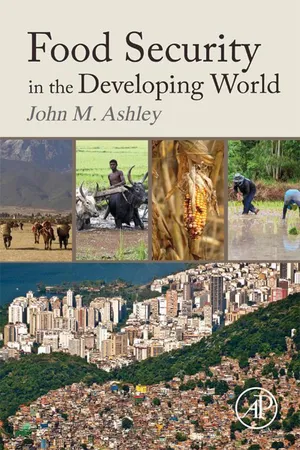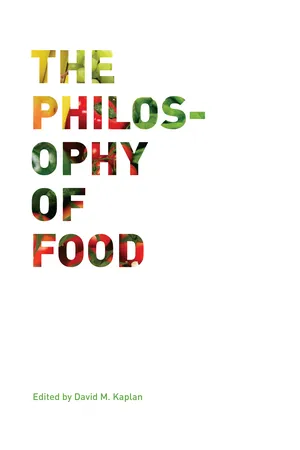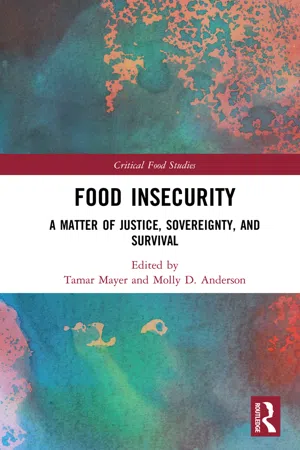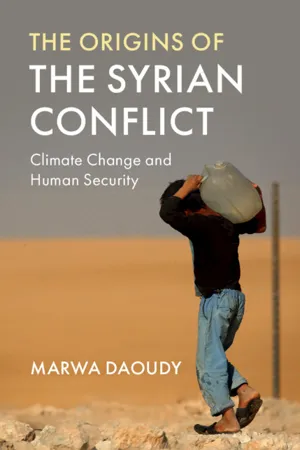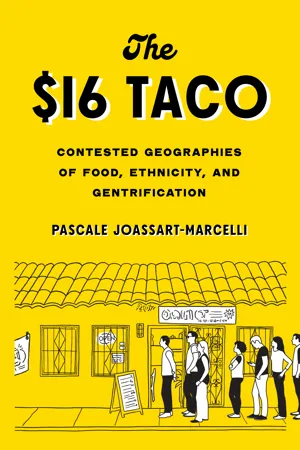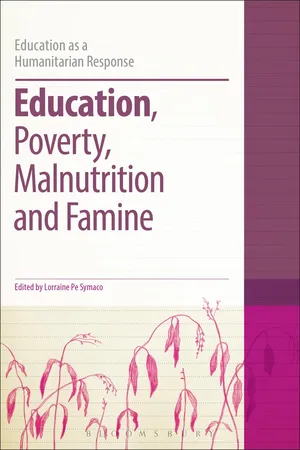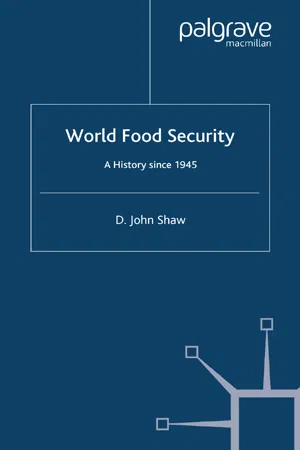Geography
Impacts Of Food Insecurity
Food insecurity refers to the lack of consistent access to enough food for an active, healthy life. Its impacts include malnutrition, poor physical and mental health, and reduced productivity. Food insecurity can also lead to social and economic challenges, such as increased healthcare costs and decreased economic development in affected regions.
Written by Perlego with AI-assistance
Related key terms
1 of 5
11 Key excerpts on "Impacts Of Food Insecurity"
- eBook - ePub
- John Michael Ashley(Author)
- 2016(Publication Date)
- Academic Press(Publisher)
Chapter ThreeCauses of Food Insecurity
Abstract
The multidimensional etiology of food insecurity is explored. The most important causes discussed are poverty and insufficient awareness; environmental degradation and climate change; food price hikes and price instability; conflict; sub-optimal enabling environment for food security; pre-dispositions of the community to disease and intestinal afflictions; large-scale land lease in one country by another; and, large areas of arable land set aside for biofuel productionKeywords
Poverty; awareness; climate; FPC; conflict; policies; disease; land; biofuel; population; productivity; social3.1 Multidimensional Etiology
Section 2.5 has scoped the predisposition of some communities and individuals toward food and nutrition insecurity, this discussion touching on “causes” of the conditions. More detail is given below on the technical and social causes underlying these correlations, the causes often interrelated.The world faces a new conjunction of several factors with a cumulative effect bearing little relation to the causes of the major food crises at the end of the 1970s and in the early 1980s, particularly in the Sahel and the Horn of Africa (EC, 2009 ) op. cit . The new factors include declining world food stocks, population explosion in many developing countries especially in urban areas, food and fuel price fluctuations, expansion of biofuel production from erstwhile “food crops”, and climate change.3.2 Poverty and Insufficient Awareness
The OECD (Organization for Economic Cooperation and Development) defines poverty as a state which “encompasses different aspects of deprivation that relate to human capabilities including consumption and food security, health, education, rights, voice, security, dignity and decent work”. Poverty is not merely “income poverty” or “consumption poverty”, but poverty of equitable opportunity. In the view of the Organization of American States, poverty for such peoples implies and includes undernutrition, unemployment, illiteracy (especially among women), environmental risks and limited access to social and sanitation services, including health services in general (OEA, 2000 - eBook - PDF
- David M. Kaplan(Author)
- 2012(Publication Date)
- University of California Press(Publisher)
The FAO identifies several causes of this situation, including prominently a correla-tion between increases in income and higher-fat diets low in key micronutrients, a transition to a sedentary lifestyle associated with urbanization, and a reduction in the diversity of domestically produced foods as farmers produce single crops best suited to export demands (FAO 2006a). The metabolic syndrome often char-acterized as the “four horsemen of the apocalypse” because of the joint increased incidence of insulin resistance, hypertension, dyslipidemia, and abdominal obesity is ravaging industrialized countries with increasingly poor diets (Lutsey, Steffen, and Stevens 2008). CAUSES OF FOOD INSECURITY The social impact of food insecurity is clear, yet its causes are complex and poorly understood. Food insecurity and poverty, for example, are clearly connected, but the precise relationship has yet to be elucidated. The FAO observes that labor (the only resource of many people in developing countries) is severely affected by hunger. Nobel laureate Robert Fogel estimates that 50 percent of the economic growth in the United Kingdom and France between 1700 and 1900 was due to improvements in food security, and this led to improvements in nutrition and overall health. But the inverse relationship also Scenarios for Food Security 255 holds: production, output, and wages all suffer in times of food insecurity (FAO 2002). Food insecurity is also implicated in breakdowns of domestic and civil society. Conflict increases when food insecurity is high (FAO 2002); and since women are more often affected by food insecurity, they suffer dispropor-tionately more than men (Quisumbing, Meinzen-Dick, and IFPRI 2001; Isis-WICCE 2004). Food insecurity results from diverse and often localized causes of scarcity. Popu-lation growth and household incomes are cited as demand-side changes that affect food insecurity (Southgate, Graham, and Tweeten 2007). - eBook - ePub
Food Insecurity
A Matter of Justice, Sovereignty, and Survival
- Tamar Mayer, Molly D. Anderson, Tamar Mayer, Molly D. Anderson(Authors)
- 2020(Publication Date)
- Routledge(Publisher)
The chapters in this volume address such causes in different geographical settings, historical periods, and scales (from the local to the global). But it is important to remember that these scales are neither discrete nor independent of each other and are best described as nested. Therefore, in order to understand food insecurity at the most local scale, as analyzed in Chapters 2, 3, 6, 8, 10, 11, and 12 (by Gilbertson, Mazar and Mares, Schmook et al., Harper, Oxfeld, Schwartz, and Yamaguchi and Jung, respectively), we need to include a discussion of the causes of hunger at both the national and global levels; we need to look at the impact of global processes—such as colonialism, neoliberal policies, and global warming—on those who inhabit the local scale and suffer from food insecurity the most. Chapters 4, 5, 7, 9, and 13 (by Konstantinidis, Öztürk et al., Dell’Angelo et al., Fuller, and Stapleton, respectively) address food insecurity at scales greater than the local. It is also important to learn from the past and understand how national responses to hunger have changed over time. Pierre Fuller does this in Chapter 9, using China’s responses to famines in the nineteenth and twentieth centuries to show how they depend on ideology and the availability of food at the national and local levels. Causes and consequences of food insecurity At heart, every instance of food insecurity stems from inequitable power relations. Amartya Sen (1999:16) famously declared that famine has never occurred in a functioning democracy. We could say with equal surety that food insecurity does not occur in societies in which power is shared equitably; democracy is a manifestation of equity, where the government is responsive to its people. Every case of food insecurity in this volume can be interpreted as resulting from unequal access to resources needed for food production, opportunity, or political voice (and often, from all of these together) - eBook - PDF
Food Security and Sustainability
Investment and Financing along Agro-Food Chains
- George Mergos, Marina Papanastassiou, George Mergos, Marina Papanastassiou(Authors)
- 2016(Publication Date)
- Palgrave Macmillan(Publisher)
The link between food insecurity and poverty necessitates a strong research effort on poverty alleviation. Finally, public policy design to address chronic or transitory food insecurity at national, regional or household level is part of the research agenda (FAO 2014). On the other hand, globalisation has brought sweeping changes in the global economy and has affected the operation of food supply chains that play a major role in determining food security at the country level. In addition, huge inefficiencies of the food supply chain and significant food loss and waste have a strong negative impact on food availability, pro- ductivity and the environment. The emergence of Global Value Chains (GVCs) dominating international investment and commodity trade rep- resents a paradigm shift in policy design for food security. Also alternative conduits of mobilising the private sector in linking the millions of small stakeholders (small farmers, traders, processors) to international markets through more inclusive value chains need to be explored as to results and impact. In this context, this book explores how recent developments link a number of food security issues with recent trends in international agricul- tural trade and globalisation of agricultural production and manufactur- ing, the mobilisation of small stakeholders through innovative financing mechanisms, the green growth strategies that are promoted widely and the importance of risk. Then, these issues are examined in the context of a number of case studies mainly from the Mediterranean region. Food Security and Sustainability: Renewed Interest on a Long-Standing Issue Thomas Malthus in his Essay on the Principle of Population (1798) described a forthcoming population catastrophe where he predicted a forced return to subsistence once population growth outpaced growth of food produc- tion. - eBook - PDF
- Nekesah T. Wafullah(Author)
- 2019(Publication Date)
- Delve Publishing(Publisher)
The scope of food security, however, has narrowed, from a regional/ geographic approach to an increasingly individual and household-level approach (Hospes, 2010). There are several risk factors that are commonly associated with food insecurity, for example, there are aspects that are likely to influence resources of households and the proportion of those resources available for food acquisition. Some of the main shortcomings of food insecurity include malnutrition, hunger, and poor health status and quality of life (FAO, 1983). Food insecurity remains one of the most crucial challenges to economic development. According to ICARDA (2010) report, more than 45% of rural households in developing countries are food insecure; they have continued to encounter difficulties in availability and accessibility of food. However, no adequate information exists to explain this. Household : A residential unit whose occupants living together have their needs met from common resources. Income : The cash earnings of the entire household members from all sources. Food consumption patterns : This refers to the following: • • The number of times in a week that selected food items are consumed • • The amount of selected food items consumed in a week • • The amount of money spent on food items Income group : Defined as the economic status of a household as determined by the total household income, the value of observable household items, the occupation of the head of household, and the residential area. Households’ characteristics : Refers to the households’ facts which describe them such as the number of children, economic status, level of education, and religion among others. Household Perception : Refers to the process by which households translate sensory impressions into a coherent and unified view of the world around them. - eBook - PDF
The Origins of the Syrian Conflict
Climate Change and Human Security
- Marwa Daoudy(Author)
- 2020(Publication Date)
- Cambridge University Press(Publisher)
However, a lack of rigorous empirical evidence and theoretical grounding makes it difficult to confidently make the argu- ment for this relationship. To this end, some scholars have attempted to analyze intervening variables between food insecurity and socio- economic conflict. Using economic analysis, Barrett explores the link between sociopolitical stability and food security, citing Syria as a case 64 The Context: History, Geography, Security in which disruption in food supply was a “primary trigger” to instabil- ity, although he does not discount the population’s outrage at a cor- rupt regime as another significant factor (Barrett, 2013: 342). Chapters 4 and 5 of this book analyze the disruptions in food and water supplies in the decades preceding the uprising, which serves to nuance this assertion. Brinkman and Hendrix (2011) support Barrett’s arguments in their World Food Programme report on the same topic. Although they find that food insecurity can itself be a cause of conflict, they present a more nuanced version of this argument, conceding that insecurity can be considered both a cause and consequence of conflict, and that the causal direction is not clear (Brinkman and Hendrix, 2011: 4, 20). However, in the case of the relationship between food insecurity and interstate war, they suggest that evidence is weak, while there is a strong correlation between low caloric intake and local civil conflict, protests and rioting, and some evidence for communal vio- lence. This suggests that there is value in looking at specific contextual factors within individual cases of conflict. Finally, another critical dimension of the existing work on the link between food insecurity and conflict, and one with special salience for the case study of this book, is the relationship between food insecurity and the state’s structural vulnerability (Jones et al., 2017: 340). - Available until 23 Dec |Learn more
The $16 Taco
Contested Geographies of Food, Ethnicity, and Gentrification
- Pascale Joassart-Marcelli(Author)
- 2021(Publication Date)
- University of Washington Press(Publisher)
96 4 Coping with Food Insecurity Everyday Geographies of Social Reproduction in the Ethnic Foodscape I n the United states many of the men and women who make and serve food for a living suffer from hunger and food insecurity. San Diego is no exception. Perhaps this should not be surprising in light of the prevailing low wages in food retail and service jobs described in the previous chapter. Yet it is a sad irony that those who toil in the kitchens of restaurants and the backrooms of grocery stores come home with an empty stomach and do not earn enough to feed their families. This prob- lem is exacerbated by the fact that these workers, most of whom are people of color, often live in neighborhoods where food apartheid impedes access to life-sustaining foods. Patrons of ethnic restaurants may be surprised to learn that the cooks who make them delicious and authentic food rarely eat those dishes themselves. At the same time, despite these economic constraints, food continues to play an important and positive role in the everyday lives of food work- ers, their families, and communities. In the neighborhoods where I con- ducted research—including Barrio Logan, City Heights, and Southeastern San Diego—food-insecure households have created their own food geog- raphies by sharing food with neighbors and friends, relying on local CopinG With food inseCUrity 97 convenience stores and street vendors, participating in the informal econ- omy, using ingredients and leftovers creatively, and growing their own produce. As the vast literature on the relationship between food and eth- nic identity suggests, the survival strategies of immigrants and subsequent generations are imbued with cultural meaning, memories, and emotions such as belonging and pride. Under the current political climate in which fear and shame inhibit immigrants’ participation in public assistance pro- grams, community self-sufficiency has become especially important in helping people put food on the table. - eBook - PDF
- Lorraine Pe Symaco, Colin Brock(Authors)
- 2014(Publication Date)
- Bloomsbury Academic(Publisher)
The American Dietetic Association has argued that this recent reduction in funding has ‘negatively impacted domestic food and nutrition security’ (2006, p. 1). When cuts have been made to related forms of welfare, Cook et al. (2002) found that children were more likely to visit the hospital and the emergency room as compared to children whose benefits were not reduced. Immigrants feel these impacts at a higher rate than others, with food insecurity being four times as likely amongst the families of Latino farm workers who move with the seasonal crops around the country (Capps et al. 2002; Quandt et al. 2004; Van Hook and Balistreri 2006). Food Insecurity, Hunger, Nutrition and Education in the USA 161 Research has shown, therefore, that in order to reduce food insecurity there must be a wider range of support programmes than those that simply focus on immediate access to food, such as food stamp programmes and food banks. Other distal issues are highly correlated with food insecurity, especially in the more vulnerable populations, such as unemployment and underemployment, the high cost of housing in much of the USA, the high cost of medical care and difficulty navigating government-supported medical care, drug abuse, mental health issues, the high cost of childcare and the consistent reduction of public funding (US Conference of Mayors 2005). The US context for food insecurity is also marked by ethnic disparities. Around one in five Latino families are food insecure (Nord et al. 2007). African Americans are roughly 13 per cent of the general population, yet they account for 38 per cent of those who access food banks. While overall there are higher numbers of families with food insecurity living in urban areas, rural areas have a higher concentration with more persistent poverty and more female-headed families (USDA Economic Research Service 2005). Lack of food in the USA is not the issue causing food insecurity. - eBook - PDF
World Food Security
A History since 1945
- D. Shaw(Author)
- 2007(Publication Date)
- Palgrave Macmillan(Publisher)
At the national level, government policies can make or break efforts to end hunger, and good governance (including the rule of law, removing corruption and respect for human rights) was essential for promoting food security. Five recommendations are made for community-level interventions: increasing agricultural productivity among food-insecure farmers; improving nutrition for the chronically hungry and vulnerable; reducing the vulnerability of the acutely hungry through productive safety nets; increasing incomes and making markets work for the poor; and restoring and conserving the natural resources essential for food security. Within these five broad recommendations, the task force identifies Dimensions of Poverty and Food Insecurity 407 40 proposed interventions. It is recognized that not every intervention will be appropriate to every country and locality. An important step would be to identify the priority interventions for the local conditions that prevail. An alternative, controversial and less-optimistic view of the state of world food and nutrition security is given by Lester Brown, president of the Earth Policy Institute, an independent environmental research organization he founded in 2001. He presents the case for redefining world food security by pointing out that for 40 years international trade negotiations were dominated by the main grain-exporting countries but now the world may be moving into a period dominated not by food surpluses but by shortages (Brown, 2004). If this were to happen, as Brown puts it, the issue becomes not exporters’ access to markets but importers’ access to supplies, in what he calls ‘the politics of food scarcity’. He considers that the big test of the international community’s capacity to manage scarcity may come when China turns to the world market for massive imports of grain every year, demand on a scale that could quickly overwhelm world grain markets. - eBook - PDF
The State of Food Security and Nutrition in the World 2019
Safeguarding Against Economic Slowdowns and Downturns
- Food and Agriculture Organization(Author)
- 2019(Publication Date)
- Food and Agriculture Organization (FAO)(Publisher)
Economic slowdowns and downturns worsen global food crises Countries experiencing crisis levels of acute food insecurity also typically experience economic disarray. In the last three years (2016–2018), more than 100 million people every year have faced periods of acute food insecurity. 18 In 2018, 113 million people across 53 countries and territories faced c risis levels of acute food insecurity or worse (IPC Phase 3 and above or equivalent) 19 where urgent humanitarian actions were needed to save lives and livelihoods, as well as to address high or above-average acute malnutrition. Analysis of acute food insecurity, including the drivers behind the food crisis, carried out at the country level, sheds light on how economic slowdowns and downturns worsen food crises. 20 It shows that, in 2018, conflict remained the key driver of food crises, affecting around 74 million people, two-thirds of whom faced acute food insecurity. Climate and natural disasters were the primary driver of acute food insecurity for another 29 million people. Economic shocks were the primary driver of acute food insecurity for 10.2 million people. While economic shocks are rarely the primary drivers of food crises, they are significant secondary or tertiary drivers of them. In many instances, significant economic shocks – or even not-so-significant shocks that occur in fragile economies – can undermine economic activity, worsen the severity of acute food insecurity, and prolong the duration of the crisis. In fact, more than 96 million people in 33 countries who suffered from acute food insecurity in 2018 lived in places where the economy was undergoing economic shocks of rising unemployment, lack of regular work, currency depreciation and high food prices ( Table 8 and Annex 5 for the list of countries by economic shock). 21 The economy of most of these countries (27 out of 33) was contracting, according to their real GDP per capita growth for 2015–2017. - eBook - PDF
India's Fiscal Policy
Prescriptions, Pragmatics and Practice
- Supriyo De(Author)
- 2017(Publication Date)
- Cambridge University Press(Publisher)
It also includes issues of food availability, affordability and public delivery systems, which have become crucial factors for ensuring overall FIGURE 4.1 Underweight children below five years (in %). Note: All India figure is at 29 per cent Source: Rapid Survey on Children, 2013–2014 (2015). Fiscal Implications of Food Security in India | 113 food security in a region. Maxwell and Frankenberger (1992), while discussing various definitions of food security, broadly suggest that food security is nothing but ‘secure access at all times to enough food’. This broad explanation is applicable to all the regions over time, at the same time there are variations within a region, for instance, ‘enough’ can be evaluated differently in rural and urban Indian context. FAO’s World Food Summit (1996) defines, ‘Food security, at the individual, household, national, regional and global levels [is achieved] when all people, at all times, have physical and economic access to sufficient, safe and nutritious food to meet their dietary needs and food preferences for an active and healthy life’. This definition was refined in ‘The State of Food Insecurity, 2001’ as ‘Food security [is] a situation that exists when all people, at all times, have physical, social and economic access to sufficient, safe and nutritious food that meets their dietary needs and food preferences for an active and healthy life’. As the definition suggest, this has three components: Food availability: sufficient quantities of food available on a consistent basis; Food access: having sufficient resources to obtain appropriate foods for a nutritious diet; and Food consumption: appropriate use based on knowledge of basic nutrition and care, as well as adequate water and sanitation. Food security, as suggested by Koc et al. (1999), consistes of availability, accessibility, acceptability and adequacy.
Index pages curate the most relevant extracts from our library of academic textbooks. They’ve been created using an in-house natural language model (NLM), each adding context and meaning to key research topics.
